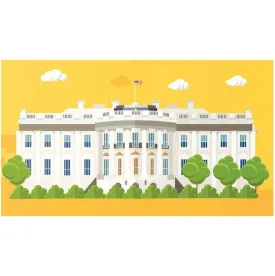On May 19, 2020, in response to the COVID-19 pandemic, President Trump signed Executive Order 13924, to provide regulatory relief for entities economically impacted by the pandemic. Section 6 of the Executive Order directed agencies to revise their procedures and practices in administrative investigations and enforcement in light of certain enumerated principles of fairness. It also required the Director of the Office of Management and Budget (OMB), in consultation with the Assistant to the President for Domestic Policy and the Assistant to the President for Economic Policy, to issue memoranda needed to guide implementation of the EO. On August 31, 2020, OMB issued such a memorandum, providing guidance on the implementation of Section 6.
OMB’s memorandum outlines a list of best practices for federal agencies to consider as they review and revise existing investigation and enforcement procedures. In general, these best practices appear to be geared toward enhancing fairness in administrative enforcement. They include, among others:
- Agencies should read any genuine statutory or regulatory ambiguities related to administrative violations and penalties in favor of the targeted party.
- Penalties should be proportionate, transparent, and follow consistent standards. Agencies should decline enforcement when the regulated party attempted in good faith to comply with the law.
- Administrative enforcement should be prompt, fair, and transparent. Tolling agreements should be disfavored, and agencies should publicize the conditions in which investigations and enforcement will occur.
- The Government should bear the burden of proving an alleged violation of law; the subject of enforcement should not bear the burden of proving compliance.
- The Government should provide favorable evidence in possession of the agency, including evidence material to the mitigation of damages or penalties, to the subject of an administrative enforcement action.
- All rules of evidence and procedure should be public, clear, and effective. Agencies should seek to reduce the use of hearsay evidence, with limited exceptions, and should utilize the framework in Daubert v. Merrell Dow Pharmaceuticals, Inc., 509 U.S. 579 (1993), to determine the veracity of scientific evidence.
- Administrative enforcement should not be based upon improper government coercion, or retaliatory or punitive motives.
- Liability should be imposed only for violations of statutes or duly issued regulations, after notice and an opportunity to respond. This requires that documents initiating investigation or enforcement include citations to the statutes or regulations at issue, along with an explanation as to how the asserted conduct is prohibited.
- Agencies must be accountable for their administrative enforcement decisions. Investigations and enforcement actions should be approved by an agency official who is an Officer of the United States (i.e., an agency official with significant authority), and agencies should periodically publish data regarding their enforcement adjudications, including, for example, the number of matters pending with the agency over relevant time periods and the types of matters adjudicated by the agency.
In many respects, the “best practices” outlined by OMB reaffirm settled principles of law and well established agency enforcement rules (e.g., that the government bears the burden of proof and that agencies must notify parties of the alleged violations and provide an opportunity to respond). That said, OMB’s guidance may provide helpful ammunition to regulated persons and entities in their dealings with the enforcement arms of federal agencies. In particular, the memorandum’s instruction that agencies should decline enforcement when the regulated party attempted in good faith to comply with the law may provide additional support to “good faith” defenses. Several of the instructions would be contrary to the established regulations or case law at many enforcement agencies. For example, evidence rules in agency adjudications are often more accepting of hearsay, and more open to a range of expert testimony, than under court rules. The direction that an agency should provide favorable evidence in its possession already exists in criminal cases, but extending it to civil enforcement would be of great value in defending those cases.
Thus, the guidance is a mix of statements that describe principles that are already in place, instructions that would require legal changes at some agencies, and directions that agencies can incorporate immediately into their enforcement practices, but that may be hard to measure. Whether the memorandum actually impacts administrative enforcement programs remains to be seen. Still, when you are facing off with the government, it is always good to use the government’s own policies to support your arguments when possible, and OMB’s memo may prove helpful in that respect.






 />i
/>i

